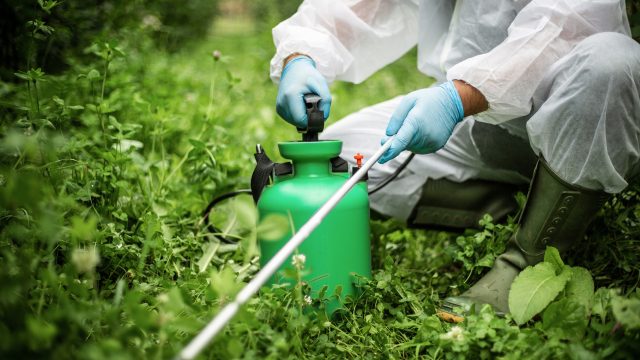01
Aug
EPA Releases Ten Years of Data on How Pesticides Impact Humans, Pets, Wildlife, and More

(Beyond Pesticides, August 1, 2023) The U.S. Environmental Protection Agency has announced that it is publishing a decade’s worth of pesticide incident data in a searchable database that will be updated on a monthly basis. The Incident Data System (IDS), with poisoning reports generated mostly from chemical manufacturers, states, a national hotline, and poison control centers, offers information on reported pesticide exposures from accidental poisoning of pets, wildlife, and humans, to pesticide drift, noncompliance, and other pesticide incidents that may be associated with product uses in compliance with label instructions. Tracking this incident data is essential to understanding the risks and damages associated with pesticide use. Â
The bulk of the data on incidents is from consumer reports to chemical manufacturers. Chemical companies are required under the Federal Insecticide, Fungicide, and Rodenticide Act (FIFRA), Section 6(a)(2) to report incidents: “If at any time after the registration of a pesticide the registrant has additional factual information regarding unreasonable adverse effects on the environment of the pesticide, the registrant shall submit such information to the Administrator.” The determine of threshold number of incidents required to be reported as a pattern of “unreasonable adverse effects” is left to the manufacturers to determine. Through EPA’s Voluntary 6(a)(2) Incident Reporting Form, chemical companies are instructed to determine “the severity category of any given incident” and “the appropriate method of reporting that incident to the EPA.” According to EPA, “There are two sets of forms to reflect the two methods of reporting incidents to the Agency. Incidents that are of a more significant nature must be reported individually. Incidents that are either minor or more commonly encountered must be reported in aggregate.”Â
Publishing incident data in the IDS is the first step to analyzing pesticide incidents to help regulatory agencies and stakeholders identify patterns, take appropriate actions, and presumably improve pesticide restrictions for the protection of public health and the environment. The underlying data in the IDS relies on pesticide incident reports, which are generated when a person experiences harm or witnesses harm to another person, animal, or plant and alerts the appropriate authorities (including the EPA, poison control centers, and state regulatory agencies). For more information on how to respond to pesticide emergencies. Read more here. Â
Information in the IDS database includes details about the location of the pesticide incident, the exposure of an animal or human, the severity level, the date of the incident, and information about the ingredient or product involved in the exposure. Additionally, the database provides aggregated counts of reported incidents by exposure type. Â
Before the IDS, access to pesticide incident data required filing a Freedom of Information Act (FOIA) request, a cumbersome process that was out of reach for many. Now, the public can access data from over 44,000 reports of pesticide incidents. Â
Many have long interpreted FIFRA, Section 6(a)(2) to mean that once any adverse effect on the environment has been identified, registrants are required to submit (additional) product information to the agency in order to address any data gaps for registration reevaluation. However, Section 6(a)(2) “does not require a registrant to generate new data or to seek out additional information.” Reports of bee deaths, which is by all intents and purposes, an unreasonable adverse effect, can and should be reported under Section 6(a)(2). The problem is that the registrant is required to report these incidents to EPA, but only after the incidents are reported to them by the affected party. The manufacturer of the product suspected of causing the bee incident most likely will conduct its own investigation into the incident, and as many believe, can misstate the results of the investigation in their favor. See Pesticide Enforcement and Compliance.Â
The IDS database will help uncover patterns in pesticide data, which can be used to address widespread harms such as the Seresto flea collars that were linked to nearly 1,700 pet deaths (with active ingredients of flumethrin and imidacloprid). For more coverage from Beyond Pesticides on the risks of the popular flea and tick collar, see here and here and here and here.  Â
According to the Center for Biological Diversity, the IDS covers information about the following pesticides incidents:Â Â
- 4,412 incidents involving Glyphosate and human harm. Glyphosate is one of the most common herbicides.  Â
- 4,423 incidents involving Imidacloprid (a common neonicotinoid insecticide) and human harm Â
- 6,343 incidents involving atrazine, the second most common herbicide.
- 1,169 incidents involving brodifacoum, one of the most widely used rodenticides in rat poison products.Â
- At least 18 human deaths associated with paraquat Â
If you would like to prevent your wild stock, pets, family, and ecosystem from experiencing the harms that are reported in the IDS, pass a local ordinance to eliminate pesticides in your community. Visit Beyond Pesticide’s website to learn how to pass an ordinance in your community here. To get your community off the pesticide treadmill, see Beyond Pesticides’ Parks for a Sustainable Future.Â
All unattributed positions and opinions in this piece are those of Beyond Pesticides.Â











The public has a right to see and read about the abuses of all these pesticides we are forced to eat, breath, drink, and live in. Pesticides are killing everything and all of us as well. A few rich corporations have no right to kill us all. Why? For money? If we all die which is likely how will they live? Very odd. Very selfish. Verymurderous.
August 2nd, 2023 at 7:07 pm